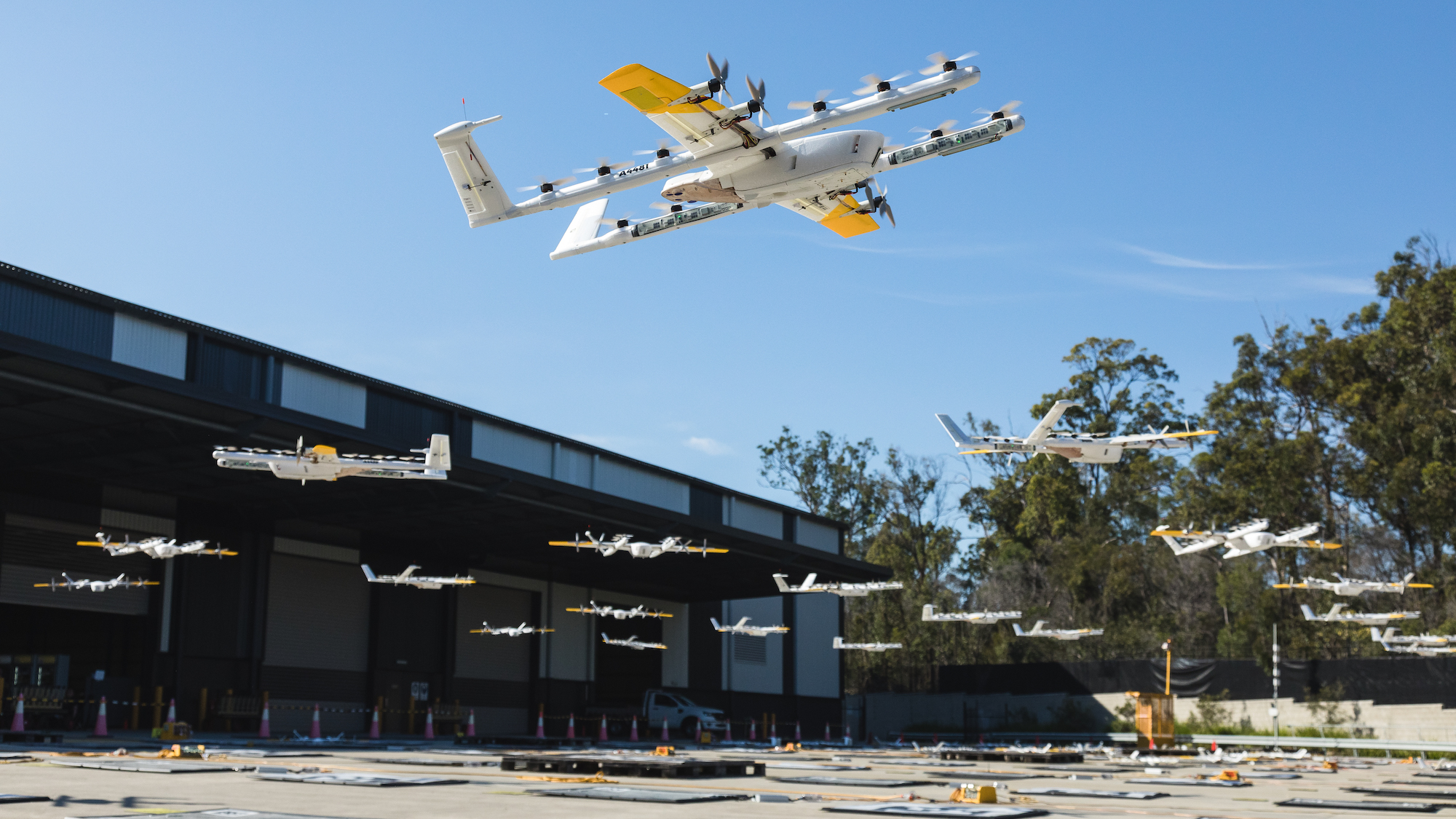

Wing, the drone-delivery subsidiary of Alphabet, Google’s parent company, has just revealed a new device called the AutoLoader that brings the company a step closer to its vision of wide-spread, affordable, drone-powered, last-mile delivery. The AutoLoader will allow delivery drones to collect packages from an automated curb-side device that can be situated in an unused parking spot. The device, which enables a drone to collect a package without landing or much human intervention, will mean that drones no longer have to return to a central hub after each trip as part of the company’s new Wing Delivery Network.
Over the past few years, Wing has proved to be one of Alphabet’s most interesting moonshots. It now operates commercial drone delivery services in the Dallas-Fort Worth area in Texas, as well as in Finland and Australia, where customers can order small products, groceries, and take-away food from local shops using an app. According to Wing, it has “moved as many as one thousand packages per day in a delivery region of more than 100,000 people.”
While an impressive feat, Wing is limited by how it currently operates. When a customer orders something, a package is prepared by staff and loaded onto a drone waiting outside on a charging pad. It then flies to the customer at speeds of up to 65 mph, giving it a six-mile range and maximum of six-minute delivery time, before dropping off its package using a tether and returning to its base. It works as a proof of concept, but as a system, it doesn’t offer a lot of opportunity for growth or scale.

Wing’s AutoLoader and Wing Delivery Network aim to solve these problems. The AutoLoader is designed to work with a store’s existing curb-side pickup workflow, and means that packages don’t have to come from a single drone-supported location. Instead, staff at the store will be able to load a package into the AutoLoader where one of Wing’s aircraft can collect it using its tether and drop it to a customer. Then, as long as it has enough battery life, the drone can collect another package from a different store, and so on and so on, until it needs to return to base to land and recharge. In a video introducing the setup, Wing CEO Adam Woodworth likened it to ride-sharing apps like Uber. In other words, instead of a hub-and-spoke model, this approach aims to link multiple stops together.
[Related: Check out Wing’s new delivery drone prototypes]
The AutoLoader and Wing Delivery Network are both part of Wing’s aim to have a delivery system capable of delivering millions of packages to millions of customers by mid-2024—and at a lower cost per delivery than ground transport, like cars, bikes, and scooters, can do for the fast delivery of small packages.
“The discussion in this industry has often been about building a great drone delivery service, but it hasn’t really been about building a delivery service,” Woodworth explains by Zoom. To him, “the drone part is the least important part.”
If Wing is to succeed, it needs to go beyond the novelty of flying packages around and become a meaningful delivery business. On the same call, Jonathan Bass, head of Wing’s marketing and communications, says, “It’s not replacing ground delivery, but we strongly believe that, as part of a multimodal delivery environment, [Wing] can play a significant role in the fast delivery of small packages.”
And according to Woodworth, things are looking good. “We are now at the place where the technology is largely ready. [Wing’s] demonstrations in the different markets have shown that these are viable options and that people want to actually use the service, and the regulatory environments are at a place where that sort of scale and that sort of growth is feasible,” he says. “This is the time to go and push it over the finish line.”
The AutoLoader will likely roll out in Australia first, according to Woodworth, where Wing has its most mature commercial market. If it works there, Wing plans to scale and replicate it around the world. If it can do that, it might get its millions of packages to millions of customers.
Watch a short video about the new approach, below.

